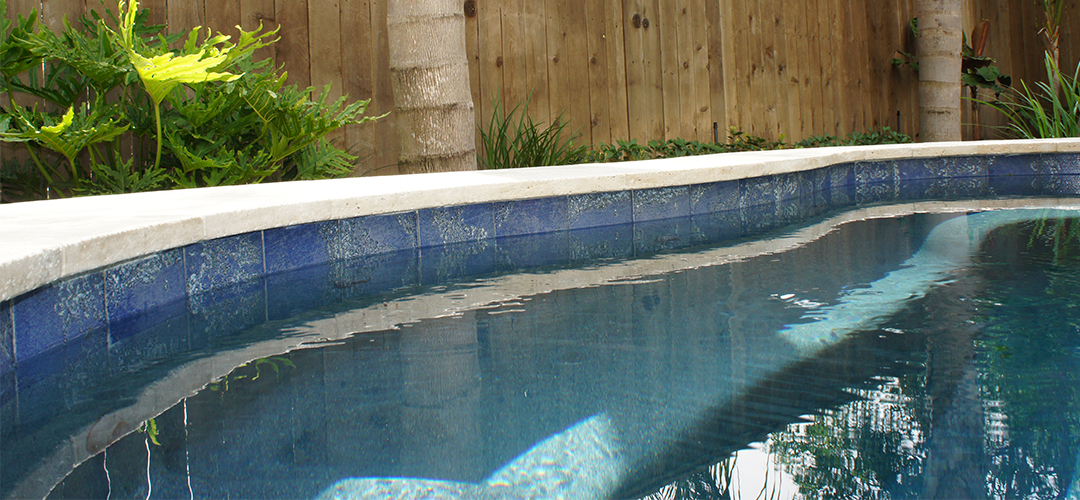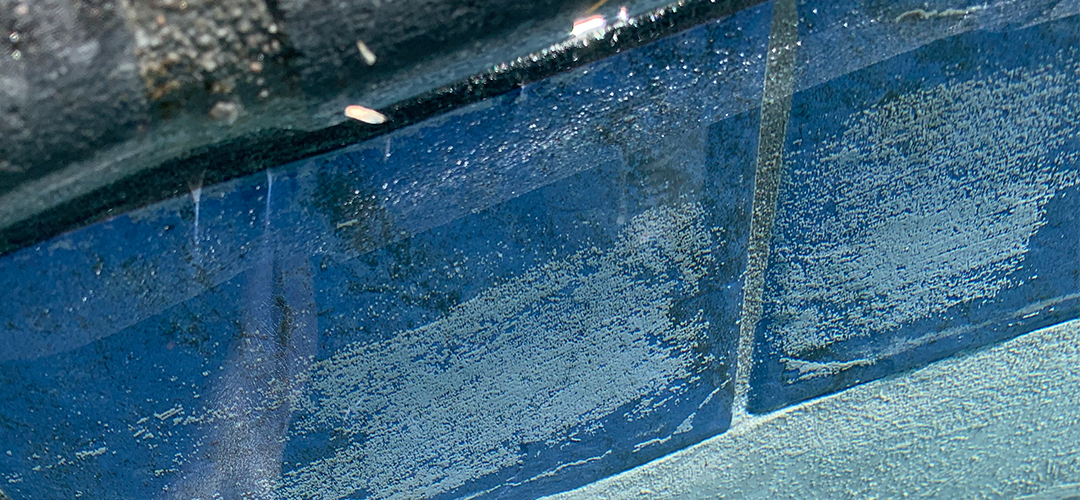How To Clean Pool Tile Calcium Deposits
How to Clean Pool Tile

From sparkling, modern mosaics to traditional Spanish-style ceramics, tile adds a splash of color and personality to any backyard swimming pool. But swimming pool tile does more than look great: It also helps protect your pool's water line from staining and mineral buildup.
And with the right maintenance routine, your pool tile can last for years. New to pool care? No worries. Here's a quick guide to the ins and outs of tile maintenance.
Calcium Buildup
Calcium buildup is probably the most common tile maintenance issue that you'll face as a swimming pool owner. This white, scaly buildup is often caused by high pH levels or high alkalinity, which can cause calcium carbonate to separate from the pool water and form scaly buildup on your pool tiles.

Did you know?
A pH of 7.4 is considered "ideal" for swimming pool water. Ideal total alkalinity is between 80 to 120 parts per million (or "PPM" for short).
Other causes of calcium deposits include:
- Heat. When temperatures rise, pool water evaporates more quickly and leaves calcium deposits behind. If you live in a part of the country with long, hot summers, you're likely to have more issues with calcium deposits.
- Hard water. If your local water supply is considered "hard," you'll also see more calcium carbonate buildup on your pool tile.
Getting rid of calcium deposits
For light, thin calcium deposits, try using a soft brush (such as an old toothbrush) and a solution of vinegar and water. If that doesn't work, try cleaning the tile with a solution of water and muriatic acid (you can find muriatic acid at your local hardware or pool supply store). Some retailers also sell specially formulated tile cleaners.
Another option is pressure washing. You can rent a pressure washer from just about any big-box home improvement store. Just be sure to use a low setting, and don't use a pressure washer on any loose or cracked tiles!
Pumice Pros and Cons
Pumice stone is another popular choice for removing small calcium scale deposits. It's inexpensive and easy to use, but wears out quickly and it's not the fastest method, so this isn't the best option if you're cleaning all of your tile. Just be careful that you don't scratch your tile (if you're not sure about using a pumice stone, check with your pool tile manufacturer or do a test on a small, inconspicuous area before you start)
If you've tried everything and those stubborn calcium deposits simply won't go away, it might be time to call in the pros. Check with your pool professional to discuss options like bead blasting.
Clean Tile = Clean Pool
To keep your pool tile buildup-free, you should establish a good pool maintenance regimen that includes testing your water's pH and alkalinity levels (you can buy an easy-to-use test kit at your local pool supply store) and brushing your pool tile regularly.
Don't Forget the Grout!
The grout between your swimming pool tiles can be prone to algae growth. To remove algae, start by scrubbing the grout with a stiff brush. Once you've scrubbed the grout clean, rub it with a chlorine tablet. Finally, shock your pool to prevent regrowth.
FAQs: Pool Tile Maintenance
Can I use "regular" kitchen or bathroom tile in my pool?
We recommend sticking with tile made specifically for swimming pools. While "regular" kitchen and bathroom tile is designed to get wet, it's not typically meant to be used outdoors, and exposed to pool chemicals. Tile that has not been designed for swimming pools is more likely to fade, corrode, and crack -- and need repairs and replacement -- sooner than swimming pool tile.
How long does swimming pool tile last?
With proper maintenance, swimming pool tile can last decades. You can help ensure a long lifespan by keeping your pool tile clean and staying on top of maintenance and repairs. And, of course, make sure that you choose tile that was manufactured specifically for swimming pools! If you use "regular" indoor tile, it may need to be replaced within a few years.
Can I use vinegar to clean my swimming pool tile?
A solution of vinegar and water can help remove calcium deposits. Apply the mixture with a spray bottle and use a soft brush to scrub at the deposits (this is a great way to re-purpose an old toothbrush) . Keep in mind, though, that vinegar is most effective when removing light scaling. If you're tackling heavier buildup, you might need something stronger to get the job done.
What Causes White Residue?
How To Clean Pool Tile Calcium Deposits
Source: https://www.swimmingpool.com/maintenance/pool-care-basics/tile-maintenance/
Posted by: summersares1952.blogspot.com

0 Response to "How To Clean Pool Tile Calcium Deposits"
Post a Comment